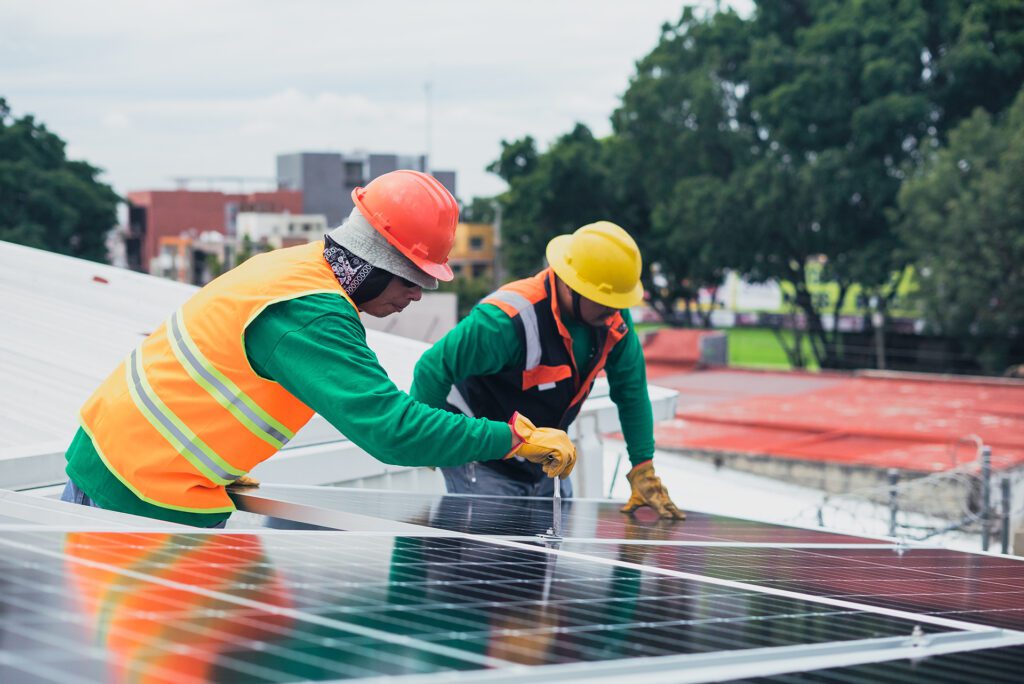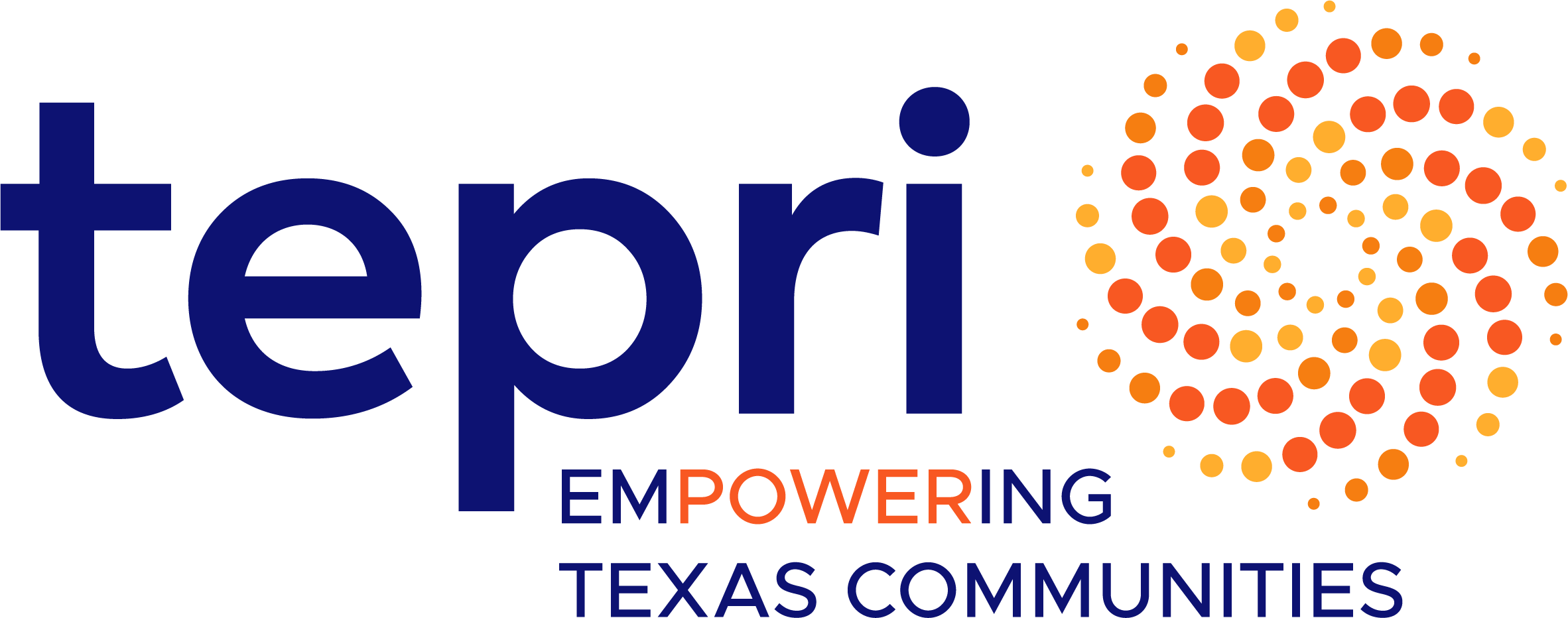OUR WORK
A COLLABORATIVE APPROACH
TEPRI brings together diverse stakeholders from across the state to spearhead impactful research initiatives, build solutions-oriented coalitions, pilot innovative energy solutions, and champion lasting change in the Texas energy space:

Conduct Research:
We conduct research to advance knowledge about low-income consumers and their relationships to energy. Our work improves the systems that enable affordable, sustainable, and reliable energy solutions to reach underserved communities.

Pilot Solutions:
We work with energy stakeholders to identify cutting edge pathways for energy solutions deployment and implement recommendations from our research, including through demonstration projects and new product development.

Develop Tools:

Create Connections:
We aim to build cross-sector collaboration amongst stakeholders to identify long-term solutions that reduce the economic burden of residential energy, decrease greenhouse gas emissions, and create new employment pathways. We link community voices with science, data, and the greater energy ecosystem in order to deliver the best available information to decision-makers.

Our vision is to create a brighter and more equitable energy future for Texas
As the energy system in Texas evolves, we have an opportunity to shape the way households participate in and benefit from the transition to cleaner energy. TEPRI believes smart deployment of energy efficiency measures, clean distributed generation and storage, electric vehicles, and other advanced energy technologies can offer pathways to reduce energy burdens and increase resilience in low-income communities. Part of our mission is to ensure that the clean energy transition adopts a holistic approach – one in which low-income and historically underserved communities are not left behind or overburdened, and are able to participate in key decision-making opportunities.
We see several opportunities to build cross-sector collaboration to reduce the economic burden of residential energy use for low-income households and create new pathways of employment in the renewable energy sector while decreasing greenhouse gas emissions in the process. By taking a holistic view on the combined benefits of energy efficiency, weatherization, and distributed generation in Texas, we can better align program design with TEPRI’s mission objectives.

TEPRI is actively focused on key initiatives in support of advancing this vision
Energy Efficiency
Energy efficiency is one of the most high-potential avenues for lowering household energy costs, reducing greenhouse gas emissions, creating jobs, and meeting growing energy demand. Increasingly, energy efficiency is being viewed as a valuable resource for maintaining grid reliability and driving down energy demand as the state’s population continues growing. The value of energy efficiency measures cannot be understated. It’s estimated that without energy efficiency measures, the United States would need an additional 313 large power plants to meet energy demand.
The Department of Energy estimates that households can save anywhere from 5 to 30 percent on utility bills with the available energy efficiency measures. Beyond energy affordability, energy efficiency measures like weatherization and insulation help protect homes from extreme weather events – including events like Winter Storm Uri. These measures are also important for improving home health by reducing exposure to air pollution, sealing leaks that may cause hazardous mold, and helping to maintain safe home temperatures.
Energy efficiency is often referred to as the ‘lowest hanging fruit’ for reducing energy costs for low-income Texans. Additionally, energy efficiency is often an important prerequisite before other sustainable energy projects like solar can move forward. TEPRI works with utilities, housing providers, and other stakeholders to develop solutions to overcome financial barriers in the energy efficiency space and increase participation in existing programming. Our goal is to ensure that energy efficiency services are accessible and affordable.
Renewable Energy
As a global leader in renewable energy, Texas generates over 92 Terawatt-hours of wind electricity a year— more than the next three top states (Iowa, Oklahoma, and Kansas) combined. With our state’s vast expanse of land and sun exposure, Texas also has great potential to capitalize on solar generation. However, solar currently only makes up about 4% of electricity generation. Historically, solar adoption has been concentrated in higher-income communities, but the declining cost of solar panels has made solar energy cost-competitive and even cheaper than traditional electricity production in some cases.
Unfortunately, Texas also produces more carbon dioxide (CO2) emissions than any other U.S. state—over 700 million metric tons every year. That’s roughly double that of the next most highly polluting state, California. Much of these emissions can be attributed to industrial production. Our rapidly growing population, which is estimated to exceed 30 million residents in 2022, is continuing to consume more energy and produce growing carbon emissions. Today, Texas ranks ninth nationwide in per capita carbon emissions, with an average of 25 metric tons of carbon dioxide produced per resident every year. Texas currently leads the nation in CO2 emissions from electricity production by a wide margin. In 2018, Texas produced 212 million metric tons of CO2 from electricity generation – over double that of the next highest state of Florida.
Texas is also a bastion of innovation, as both energy and technology companies are expanding renewable energy and energy efficiency across the state. Combined with well-designed utility and public programming and energy efficiency measures, renewable energy has the potential to reduce energy burden and provide reliable energy for all Texans.
Energy Equity
As the United States transitions away from an energy supply dominated by fossil fuels to a more diverse fuel base, it is critical to ensure that this transition is “just” and that all communities have equitable access to affordable, clean energy. Past energy transitions have too often maintained social dynamics that resulted in social, economic, and health disadvantages for low-income communities and communities of color. If equity is not centered in the current transition to clean energy, there is potential to continue the same mistakes.
Energy equity is important because it recognizes that disadvantaged communities have been historically marginalized and overburdened by pollution, underinvestment in clean energy infrastructure, and lack of access to energy efficient housing and transportation. Putting energy equity at the center of TEPRI’s solutions development process aims to reverse these negative impacts.

